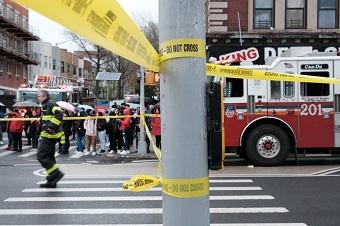Faulty computer systems prevented surveillance cameras at two Brooklyn stations from getting pictures of the gunman who sprayed bullets on a subway train recently, MTA officials said. A server problem darkened the camera feeds at the 36th Street station on the N line, where alleged gunman Frank James ended his shooting spree, the officials said. The feeds were also out at the 25th Street station in the R line, where the cops said James fled by train after his attack.
The problems prevented police and MTA officials from monitoring live pictures of the situation, and kept the system from recording any video of the gunman as he moved about the stations, officials said. MTA chairman Janno Lieber insisted the outage was “not a systemic problem,” and said he’s looking to roll out more eyes in the sky in the transit system.
“We would like to expand and also add additional capacity to those cameras so that they can be looked at for patterns and that they can all be looked at remotely,” Lieber said on NY1.
The MTA board last month approved a $50 million contract to install high-tech cameras near turnstiles at 86 stations. And transit officials last September said they’d installed cameras in every one of the city’s 472 subway stations, but not all of them were on platforms.
Even though the video feeds died at the 36th and 25th Street stations, security cameras caught the shooter entering the transit system at the Kings Highway station on the N line before the attack, police said.
MTA spokesman Tim Minton said the agency sent images and videos from loads of other subway cameras that helped police apprehend James. “At any given time there are some cameras, up to 1%, that have issues, including scheduled maintenance,” said Minton.
The MTA’s cameras at the 25th Street and 36th Street stations are near the turnstiles. The stations’ platform do not have cameras. An MTA source said platforms that are not curved — such as those on the Fourth Avenue line in Brooklyn where the attack happened — are more likely to lack security cameras. The MTA maintains the camera equipment, as well as the recorded video footage on some of them that is stored locally. MTA sources said the video feeds from the cameras are transmitted by fiber optic cables owned by Verizon, and the data itself is owned and maintained by police.








